Paediatrics ATI Exam
Total Questions : 42
Showing 25 questions, Sign in for moreAn 8-year-old girl is being admitted to the hospital from the emergency department with an injury from falling off her bicycle. What intervention will help her most in her adjustment to the hospital?
Explanation
Hospitalization can be a challenging and unfamiliar experience for children, especially when they are separated from their family and siblings. Providing clear information about visitation policies and explaining the reasons for restrictions can help the child understand and cope better with the situation.
While orienting her parents and explaining hospital schedules can be beneficial, the focus should be on directly addressing the needs and concerns of the child to support her adjustment. Using caring and comforting language is important, but it should be combined with age-appropriate explanations and addressing specific concerns related to the child's situation.
A nurse is assisting with a routine physical examination of an adolescent. The provider observes a lateral curvature of the spine. The nurse should expect the provider to document which of the following disorders?
Explanation
Scoliosis is a condition characterized by an abnormal sideways curvature of the spine, resulting in an S or C shape when viewed from the back. It commonly develops during adolescence and can vary in severity. The lateral curvature of the spine observed during the physical examination is a key sign of scoliosis.
Lordosis refers to an excessive inward curvature of the spine in the lower back, while kyphosis refers to an excessive outward curvature of the spine in the upper back, often referred to as a "hunchback."
Torticollis, on the other hand, is a condition characterized by an abnormal position or tilt of the head due to muscle tightness or weakness.
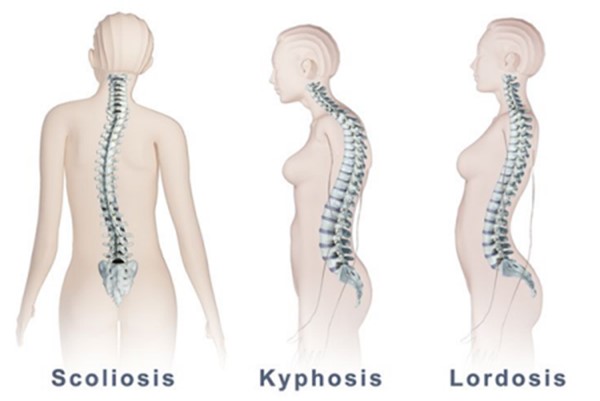
A newborn was admitted to the hospital with vomiting and dehydration. The newborn's heart rate is 170, respiratory rate is 44, blood p 85/52, and temperature is 99 Degree F (37.2 Degree C). What is the nurse's best response to the parents who ask if the vital signs are normal?
Explanation
While the newborn's heart rate of 170 bpm is elevated, the respiratory rate of 44 breaths/min, blood pressure of 85/52 mmHg, and temperature of 99°F (37.2°C) are within the normal range for a newborn.
It is important for the nurse to explain to the parents that the newborn's heart rate may be elevated due to the vomiting and dehydration and that healthcare providers will monitor the vital signs closely to ensure the newborn's stability.
A nurse is assessing a 6-month-old infant. Which of the following findings should the nurse report to the provider?
Explanation
The inability to raise the head when in a prone position is a finding that the nurse should report to the provider. By 6 months of age, infants should typically be able to raise their head and chest off the surface when placed in a prone position. This is an important milestone in motor development and is known as "head control." The nurse should report this finding to the provider to ensure further assessment and appropriate intervention if necessary.
A nurse is developing a health program for the parents of school-age boys. Which of the following information about pubescent changes should the nurse include in the program?
Explanation
The nurse should include information that growth spurts in height occur toward the end of mid puberty. Gynecomastia is not a common change in boys during puberty, but it might occur in some cases. Changes in the voice and pubic hair growth signal the beginning of puberty. If scrotal changes have not occurred by the age of 14 years, puberty might be considered delayed.
A nurse is preparing to administer the first measles, mumps, and rubella (MMR) immunization to 15-month-old toddler. Which of the following findings is a contraindication for this immunization?
Explanation
Children with congenital immunodeficiencies have compromised immune systems and may not be able to mount an adequate immune response to the vaccine. Administering live vaccines, such as MMR, to these children can potentially cause severe complications.
A nurse is providing anticipatory guidance about child development to the parents of a preschooler. Which of the following developmental tasks should the nurse include as being expected of a preschooler?
Explanation
Preschoolers, typically between the ages of 3 and 5 years, engage in imaginative and pretend play. They often create scenarios, role-play, and use their imagination to create fictional situations and characters. This type of play is important for their cognitive, social, and emotional development.
Building a section of cards and controlling impulsive feelings are not specific developmental tasks typically associated with preschoolers. While building with blocks or other construction toys can enhance fine motor skills and problem-solving abilities, building a section of cards is not a common developmental milestone. Controlling impulsive feelings is an ongoing process that develops over time and requires guidance and support from parents and caregivers, but it is not solely expected of preschoolers.
A nurse is planning care for a 2-month-old infant following a surgical procedure. Which of the following pain rating scales should the nurse plan to use to determine the infant's level of pain?
Explanation
The appropriate pain rating scale to use for a 2-month-old infant is the FLACC (Face, Legs, Activity, Cry, Consolability) scale. The FLACC scale is commonly used for infants and young children who are unable to self-report their pain. It assesses facial expression, leg movement, activity level, cry, and ability to be consoled. Each category is scored on a scale of 0 to 2, and the total score provides an indication of the infant's pain level.
The PANAD scale and OUCHER scale are more commonly used for older children, while the FACE scale is specific to assessing pain in individuals with cognitive impairments.
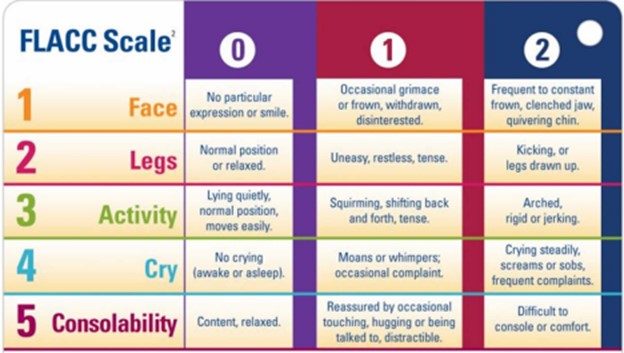
A nurse is providing care to a child who has an allergy to eggs. The nurse should question the prescription for which of the following immunizations?
Explanation
The influenza LAV is typically produced using egg-based methods, which may pose a risk for individuals with an allergy to eggs. Although the risk of a severe allergic reaction to the influenza vaccine is low, it is recommended to avoid the influenza LAV in individuals with a known severe allergy to eggs. Inactivated poliovirus (PV), Haemophilus influenza type b (Hib), and Hepatitis (Hepi) vaccines do not contain egg proteins and can generally be safely administered to individuals with an egg allergy.
A nurse is caring for a 6-month-old infant. Which of the following findings should indicate to the nurse that the client is experiencing pain following a procedure?
Explanation
Crying is a common behavioral response to pain in infants, and it serves as an important indicator of discomfort. Infants may cry more intensely, have a high-pitched cry, or exhibit inconsolable crying when they are in pain. It is important for the nurse to assess the infant's pain level and provide appropriate interventions to alleviate the discomfort.
A nurse is planning care for a 10-year-old child who will be hospitalized for an extended period of time. Which of the following actions should the nurse include in the plan of care to meet the client's psychosocial needs according to Erikson?
Explanation
According to Erikson's theory, the psychosocial task for this age group is industry versus inferiority, where children develop a sense of competence and accomplishment through mastering tasks. By supporting the child's educational activities and encouraging them to complete school work, the nurse helps promote a sense of industry and competence.
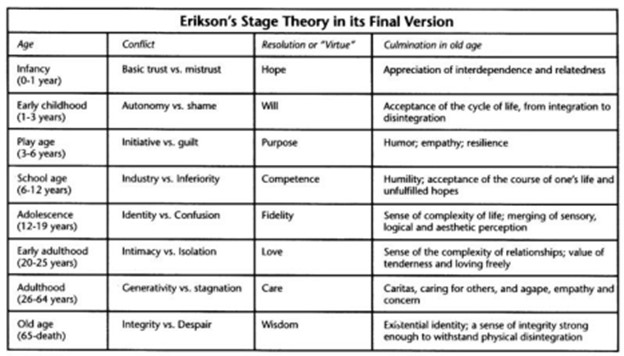
A nurse is caring for an 18-month-old toddler who has been hospitalized for 10 days. After the toddler's mother leaves the room, the nurse observes the toddler sitting quietly in the corner of the crib, sucking her thumb. When the nurse approaches the crib, the toddler turns away from the nurse. The nurse should understand that these behaviors indicate which of the following developmental reactions?
Explanation
These behaviors suggest that the child is experiencing distress or discomfort in response to the separation from the mother and the hospital environment.
Anxiety reactions are common in toddlers who are hospitalized or experience separation from their primary caregivers. It is a normal response to unfamiliar and potentially stressful situations. Toddlers at this age are still developing a sense of security and trust in their environment, and being in the hospital can disrupt their routine and comfort.
It is important for the nurse to provide a calm and supportive environment for the toddler, offering reassurance and comfort. The nurse can engage in activities that promote a sense of security and provide opportunities for the toddler to express their emotions and fears, such as through play or comforting rituals.
A nurse is assessing a toddler at a well-child visit. At what point in the physical examination should the nurse examine the child's tympanic membrane?
Explanation
The tympanic membrane is part of the ear, which is included in the head and neck assessment. By examining the tympanic membrane early in the examination, the nurse ensures that the child's cooperation and attention are maximized before they become tired or uncooperative. It also allows the nurse to complete the examination of the ear and gather relevant information about the child's hearing and ear health. After examining the tympanic membrane, the nurse can continue with the assessment of the head and neck, followed by the rest of the physical examination.
A nurse is caring for a 12-month-old toddler who is hospitalized and confined to a room with contact precautions in place. Which of the following toys should the nurse recommend in order to meet the developmental needs of the client?
Explanation
At this age, toddlers enjoy exploring objects and are developing their motor skills, so large building blocks would be an appropriate toy choice. Hanging crib toys may be too limiting in terms of exploration, and modeling clay may not be safe due to the risk of ingestion. Crayons and a coloring book may be appropriate for older children, but at 12 months, the child's fine motor skills are still developing.
A nurse is caring for a 6-month-old infant. Which of the following findings indicates to the nurse that the infant may be experiencing pain?
Explanation
Furrowing of the brow is often associated with discomfort or distress in infants. Other signs of pain in infants can include crying, irritability, increased heart rate, increased respiratory rate, and changes in sleep and feeding patterns. The eyes wide open, decreased muscle tone, and dry hands and feet are not specific indicators of pain and may have other explanations or may be within normal variations for an infant.
A nurse is assessing a 15-month-old toddler. Which of the following findings should the nurse report to the provider?
Explanation
By 15 months of age, toddlers typically develop the ability to stand and maintain balance without support. This milestone is an important indicator of gross motor development. Not being able to stand upright without support at this age may suggest a delay or impairment in motor skills, and further evaluation may be needed to determine the underlying cause.
The other findings mentioned—difficulty jumping with both feet, inability to build a tower of six to seven cubes, and inability to turn a doorknob—are within the expected range of development for a 15-month-old toddler. While some children may already demonstrate these skills, others may acquire them later in their developmental journey. It is important to consider individual variations in development, but the inability to stand without support should be further assessed.
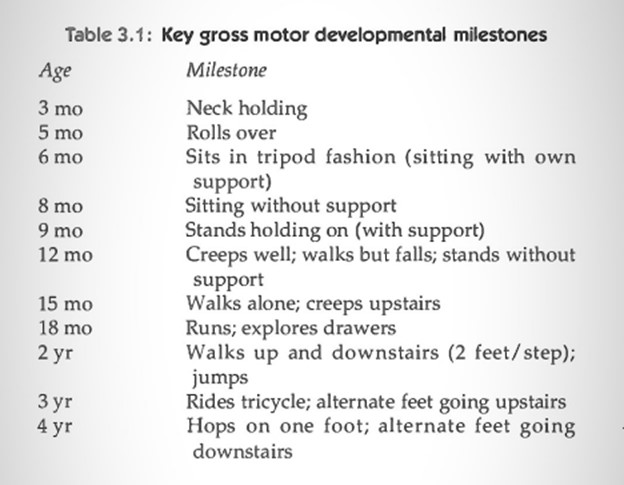
Which foods would the nurse recommend to the mother of a 2-year-old with iron deficiency anemia?
Explanation
These foods are rich sources of iron, which is important for treating and preventing iron deficiency anemia. Meats, such as beef, poultry, and fish, provide heme iron, which is more easily absorbed by the body. Eggs and green vegetables, such as spinach and broccoli, contain non-heme iron, which is also beneficial.
While fruits, whole grains, and rice are nutritious foods, they are not as rich in iron as meats and green vegetables. Therefore, they may not provide sufficient iron to address the child's iron deficiency anemia.
Drinking 32 oz of whole cow's milk per day is not recommended for a 2-year-old with iron deficiency anemia. Excessive cow's milk intake can lead to iron deficiency anemia because it can interfere with iron absorption and displace iron-rich foods from the diet. Similarly, consuming 8 oz of juice, three times a day is not recommended for a child with iron deficiency anemia. Juice does not provide significant amounts of iron and can contribute to decreased appetite for iron-rich foods. It is generally recommended to limit juice intake and prioritize whole foods for iron intake.
A nurse is collecting data from a child who is descending stairs by placing both feet on each step and holding on to the railing. The nurse should understand that these actions are developmentally appropriate at which of the following ages?
Explanation
At this age, children have developed the physical coordination and balance necessary to navigate stairs with more control and safety. They may still require support from holding onto the railing for added stability and security. As children grow older, they continue to refine their motor skills, balance, and coordination, and by the age of 4, 5, and 6 years, they typically demonstrate more advanced stair-descending skills, such as alternating feet and using the railing less for support.
The mother of a child who is 2 year 6 months in age has arranged a play date with the neighbor and her child who is 2 year 9 months old. During the play date the two mothers should expect that the children will do which of the following?
Explanation
At this age, parallel play is common, where children engage in independent play near each other but do not actively interact or engage in cooperative play. They may observe each other, imitate each other's actions, or occasionally share toys, but they are still developing social skills and may not engage in sustained cooperative play or easily share and trade toys. Each child is likely to focus on their own activities and play with one or two preferred items, ignoring most of the other toys.
A nurse is speaking with the mother of a 6-year-old child. Which of the following statements by the mother should concern the nurse?
Explanation
This indicates a potential vision problem in the child that needs further evaluation and intervention. Squinting to see the board suggests that the child may be experiencing difficulty with vision or visual acuity, which can impact their academic performance and overall well-being.
A nurse is caring for a newborn whose mother voices concerns about sudden infant death syndrome (SIDS). The nurse should include which of the following statements in a discussion with the mother?
Explanation
This is an evidence-based recommendation to reduce the risk of SIDS. The American Academy of Pediatrics (AAP) recommends placing infants on their back for sleep as the safest sleep position. This position has been shown to significantly reduce the incidence of SIDS. The nurse should emphasize the importance of following safe sleep practices, including placing the baby on their back, providing a firm and safe sleep surface, keeping the sleep area free of soft bedding or objects, and avoiding overheating.
A nurse is caring for a 2-year-old child who is hospitalized and throws a tantrum when his parent leaves. Which of the following toys should the nurse provide to alleviate the child's stress?
Explanation
Stuffed animals provide comfort and can help reduce anxiety in children.
Picture books about hospitals and building blocks might be appropriate for older children, but a 2-year-old child is more likely to find comfort in a stuffed animal.
A toy hammer and pounding board might actually increase the child's stress level, rather than alleviate it.
A nurse is providing teaching to the parents of a newborn. Which of the following information should the nurse include?
Explanation
The hepatitis B vaccine is typically administered to newborns shortly after birth, usually within 24 hours.
The measles, mumps, rubella (MMR) vaccine is typically given between 12 and 15 months of age, not at 6 months.
The first dose of the diphtheria, tetanus, pertussis (DTaP) vaccine is usually given at 2 months of age, not at the 2-week visit.
The pneumococcal conjugate vaccine (PCV) is typically given in a series, starting at 2 months of age, and is completed by the age of 12-15 months. It is not given specifically on the first birthday.
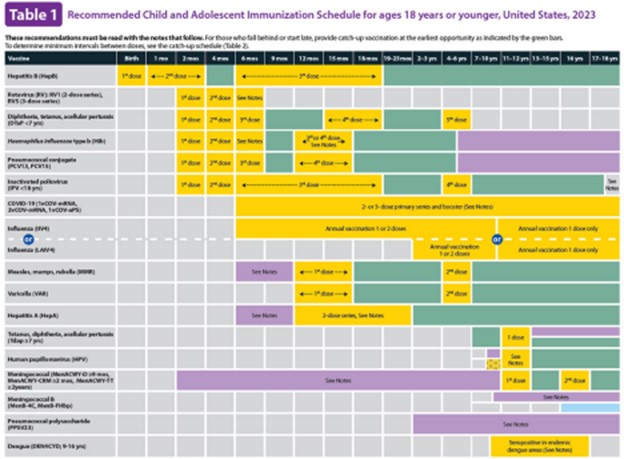
A nurse is assessing a 3 year-old-child at a routine wellness checkup. Which of the following findings should the nurse expect?
Explanation
At the age of 3, children typically start to develop better balance and coordination. They may be able to stand on one foot for a short period of time, although their ability to maintain balance may vary.
Walking backward heel to toe, skipping, and hopping on one foot are typically achieved around the age of 4-5 years.
As for vocabulary, a 3-year-old child may have a vocabulary of approximately 300-500 words, although the exact number can vary. A vocabulary of 1500 words is more commonly seen in older children.
A parent of a toddler asks a nurse at a well-child visit how the child's frequent temper tantrums can best be handled. Which of the following actions should the nurse suggest to the parent?
Explanation
Distracting the child with a different activity or redirecting their attention can help diffuse the situation and shift their focus away from the tantrum. Offering to play a game or engage in a preferred activity can help redirect their energy and emotions.
Telling the child that temper tantrums are not acceptable may not be effective as toddlers may not fully comprehend or control their emotions yet. Ignoring the tantrums can also be challenging as it may reinforce the behavior or escalate the intensity.
Physically restraining the child is not recommended as it can be distressing for the child and potentially cause harm. It is important to use positive and supportive strategies to manage and address temper tantrums in toddlers.
Sign Up or Login to view all the 42 Questions on this Exam
Join over 100,000+ nursing students using Nursingprepexams’s science-backend flashcards, practice tests and expert solutions to improve their grades and reach their goals.
Sign Up Now

